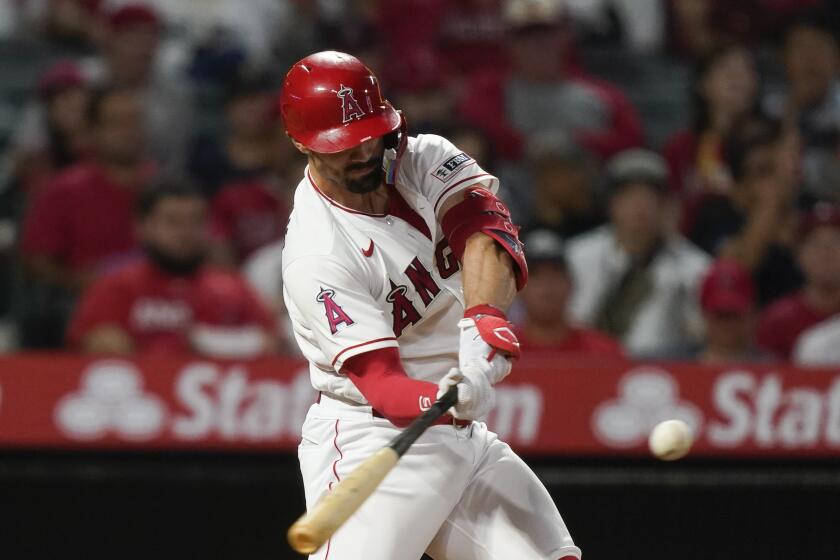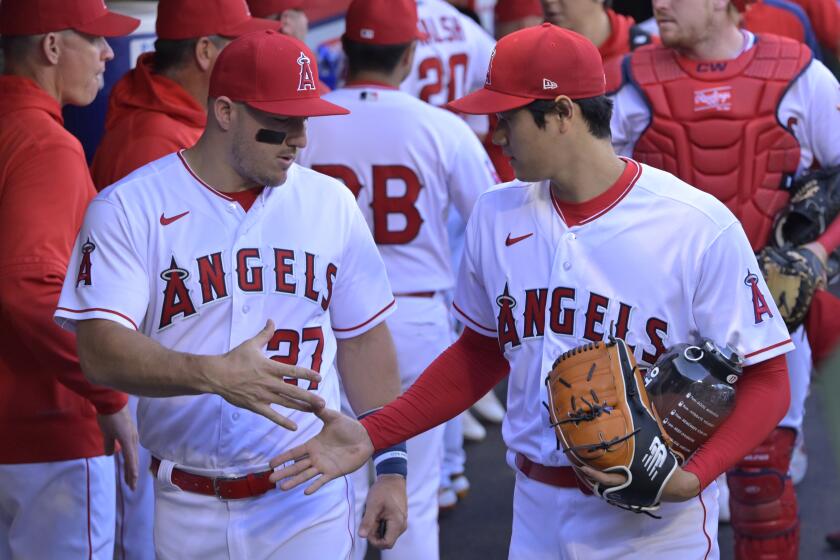Shohei Ohtani is the rarest of players. Missing games is even more rare for the two-way star
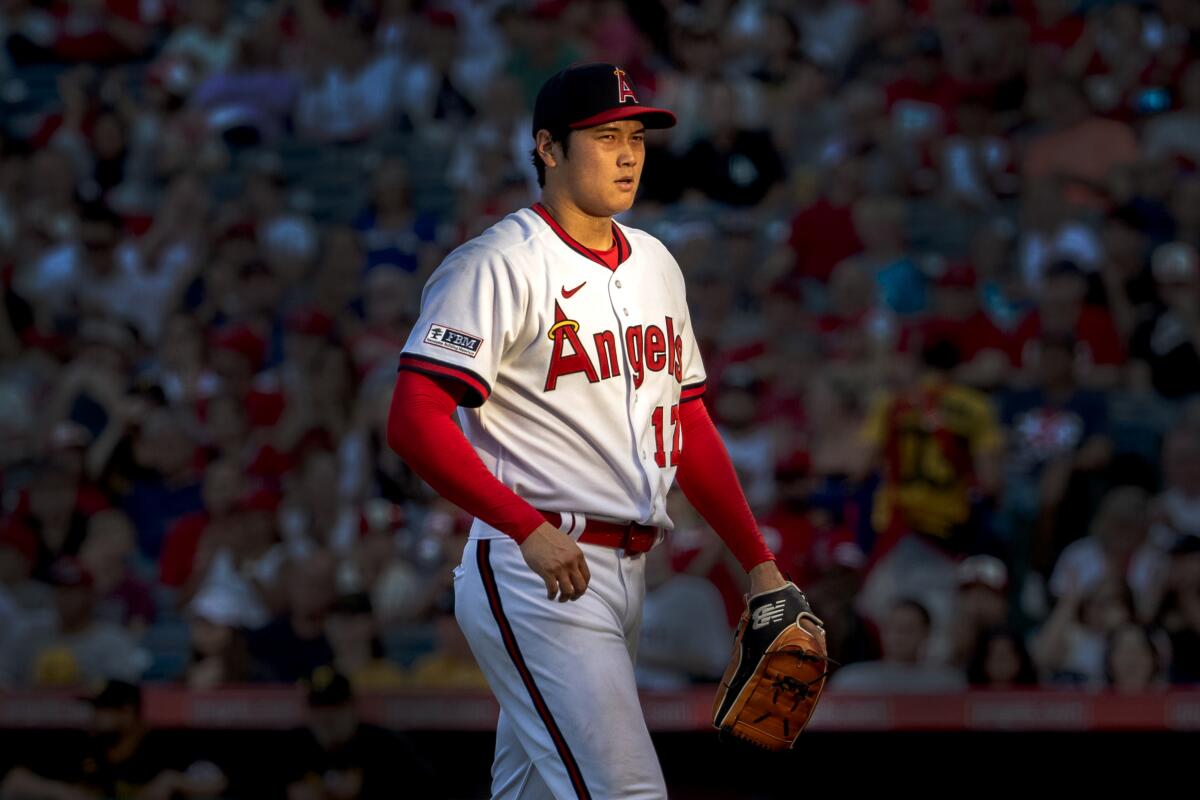
- Share via
There was the slightest hint of optimism in Phil Nevin’s words. Ahead of the Angels’ final game of a lost series against the Baltimore Orioles on Wednesday, the manager said there was a possibility that Shohei Ohtani, his two-way star, could be back in the starting lineup.
“He’s getting loosened up inside, should have an announcement on the lineup soon,” Nevin said to members of the media from the dugout at Angel Stadium. “He feels like he’s doing well today, he’s gonna take some swings. We’ll talk about it in a little bit.”
Then the lineup came out. Ohtani’s name was not on it. He ended up not taking swings in the batting cages. Ohtani felt like he needed another day off, Nevin said.
A woman captured the spirit of frustrated Angels fans when she uttered the words, ‘Please, for the love of God.’ Will the Angels make any changes?
On Thursday, Ohtani did get in some swings in the cage — he feels the issue most when he swings — but again his name wasn’t in the starting lineup.
“His swings were close, but not close enough to start tonight,” Nevin said before the Angels’ game with the Cleveland Guardians. “He’s really close. … I think we’re within a day or two.
“I think [he feels more] just a little uncomfortable. With [obliques], it has to be 100% for me, because if you rip that, it’s not a fun time. You don’t want to risk anybody at any time for that.”
It was the fourth consecutive game Ohtani had missed, nursing an ailing right oblique. Ohtani’s presence in the lineup had been a constant all season, continuing even after he tore the ulnar collateral ligament in his right arm. Before the oblique injury, he had missed just two games all season. Last year, he played 157 of 162 games. In 2021, he played 158 of 162. This week, he has missed five consecutive games.
Asked if it was weird not having Ohtani in the lineup, infielder Mike Moustakas said: “Absolutely. When you got a guy like that, you want him in the lineup every single day just to help us win ballgames. And just having him adds depth to our lineup.
“But this game is hard,” Moustakas said. “Long season and people get hurt. Hopefully he’s able to bounce back.”
Ohtani has been considered “day to day” with the oblique issue that happened while he was taking batting practice on the field on Monday, something he rarely does. Before Monday, he had taken batting practice on the field only three other times this season.
Ohtani was scratched from Monday’s lineup with what the Angels called oblique tightness. On Tuesday, after Ohtani had testing done, Nevin said that Ohtani had some oblique inflammation, but that it was a best-case scenario.
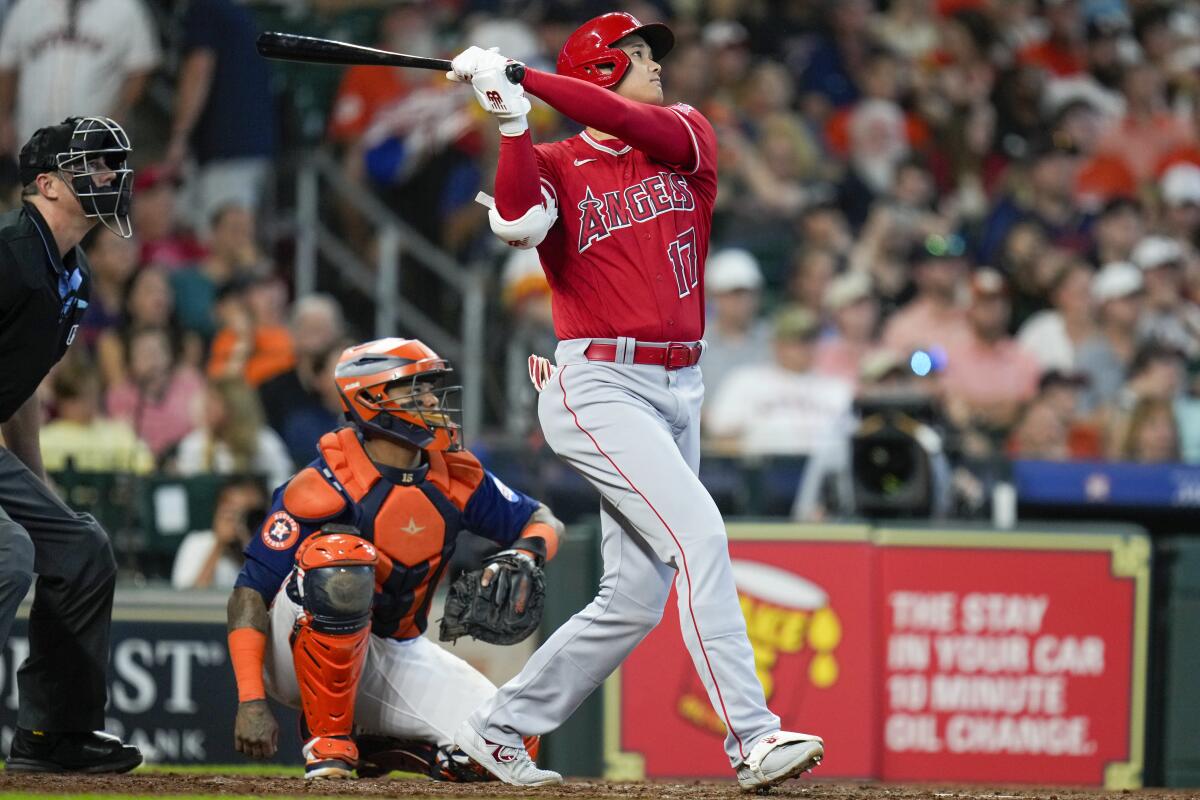
Oblique problems can be tricky. The obliques are muscles that span from the ribs to the pelvis and help the body’s ability to bend and rotate. A strain, for example, could sideline a baseball player an average of 22 days, according to Dr. Alexander Weber, an orthopaedic surgeon and sports medicine specialist with Keck Medicine of USC.
Weber is not Ohtani’s physician and spoke to The Times as an expert on oblique injuries. The key to understanding an oblique problem, he said, is in the classification of it.
“Is there anything less than a strain? Potentially the reason they’re saying it’s inflammation and not a strain,” Weber said, “is because it could be a very low Grade 1 strain. Maybe they’ve imaged it with MRI or ultrasound and said, ‘We can barely see anything’ or ‘We see a little bit of inflammation … but we don’t see any tearing, therefore we’re going to call it low Grade 1 inflammation’ or, ‘We see inflamed tissue around the muscle, but the muscle and tendon itself look healthy.’ ”
Weber drew a second comparison, to USC football.
“We use this term ‘day-to-day,’ ” Weber said. “Show up in the morning, loosen up, work out, see how you feel and then we’ll determine what you can do for the day.”
Ohtani has already been shut down from pitching for the rest of the year because of his UCL tear. He and his agent, Nez Balelo of CAA, were still exploring all of their options to address his elbow as of Monday. Balelo said at the time that they were trying to be intentional about making sure that whatever procedure they decided for his UCL would be the best one, but that they had the grand scheme of Ohtani’s career in mind.
“Big picture thoughts,” Balelo said of Ohtani’s elbow. “Being in the lineup when the bell rings in [2024], all of that. If there was anything that affects that, we would probably make a decision right now.”
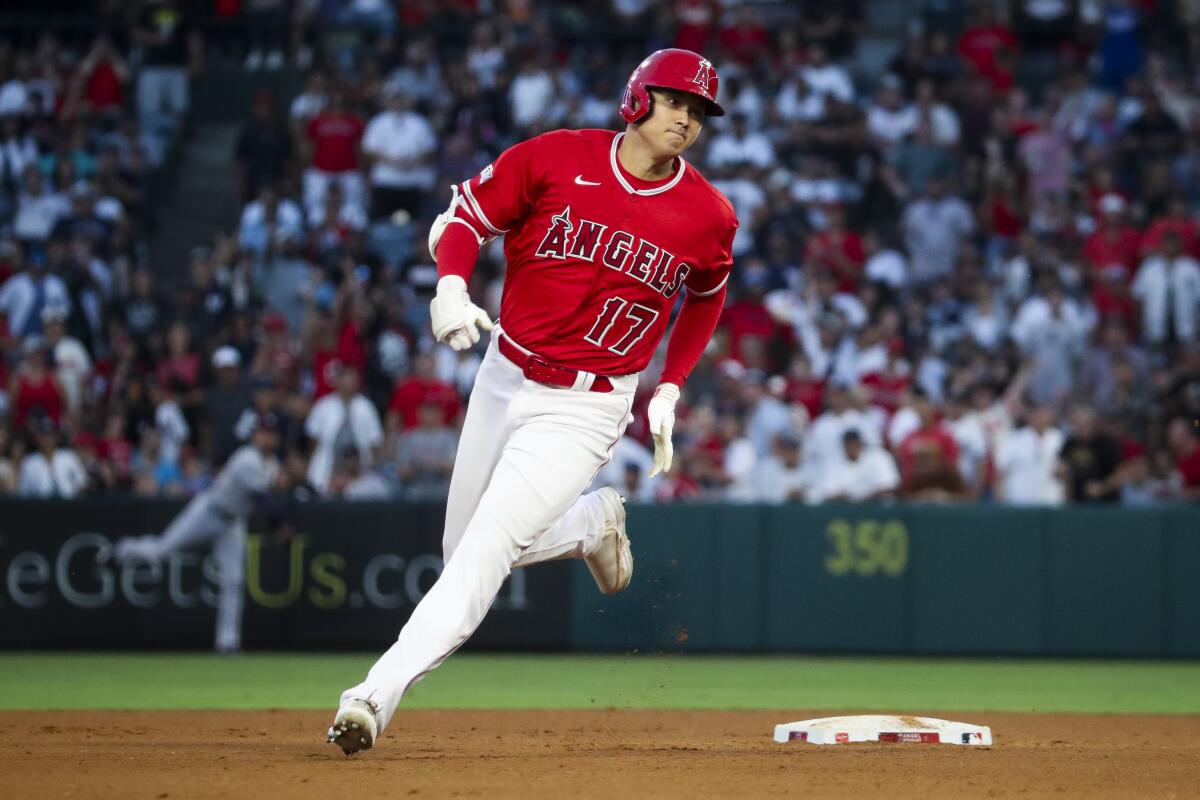
The Angels are in the final month of another lost season, with Ohtani possibly in the final stretch as an Angel. He is eligible to become a free agent after the World Series. The Angels will pack their bags and head home well before that point.
If the Angels were still in the playoff picture, his continued presence in the lineup would have meant more. Missing four games in a row would have posed bigger questions to the Angels’ chase.
Ohtani is still the favorite to win the American League most valuable player award for a second time.
He finished his season on the mound with a 3.14 earned-run average and a 10-5 record, striking out 167 batters and holding opponents to a .184 average in 23 starts. He also had the first shutout of his career.
The Angels tried to win with Shohei Ohtani and Mike Trout, but failed. Will owner Arte Moreno take a page out of the Jackie Autry playbook and make changes?
Entering Thursday, as a designated hitter in most of the 135 games he played, he was batting .304 (fourth in the American League, ninth in the majors), with a 1.066 on-base-plus slugging rate (first in MLB), 44 home runs (first AL, second MLB) and 95 RBIs (third AL, sixth MLB).
To those who know him, Ohtani’s drive to continue trying to bat this season, even before the oblique problem, comes from how much he just wants to play.
Ohtani was not in the dugout the last few games, though not far away from it either, just in the batting cage area right down the steps. He had sent interpreter Ippei Mizuhara to Nevin during Tuesday’s game to relay that he wanted to play, though Nevin did not think it was a good idea and said no.
“This guy loves the game,” Balelo said Monday, before he hurt his oblique. “And when he found out that there’s nothing that he could do to create any more damage [to his elbow] than what’s already been done, he was like, ‘I’m gonna play this thing out until we gather more information to make the right decision.’ ”

